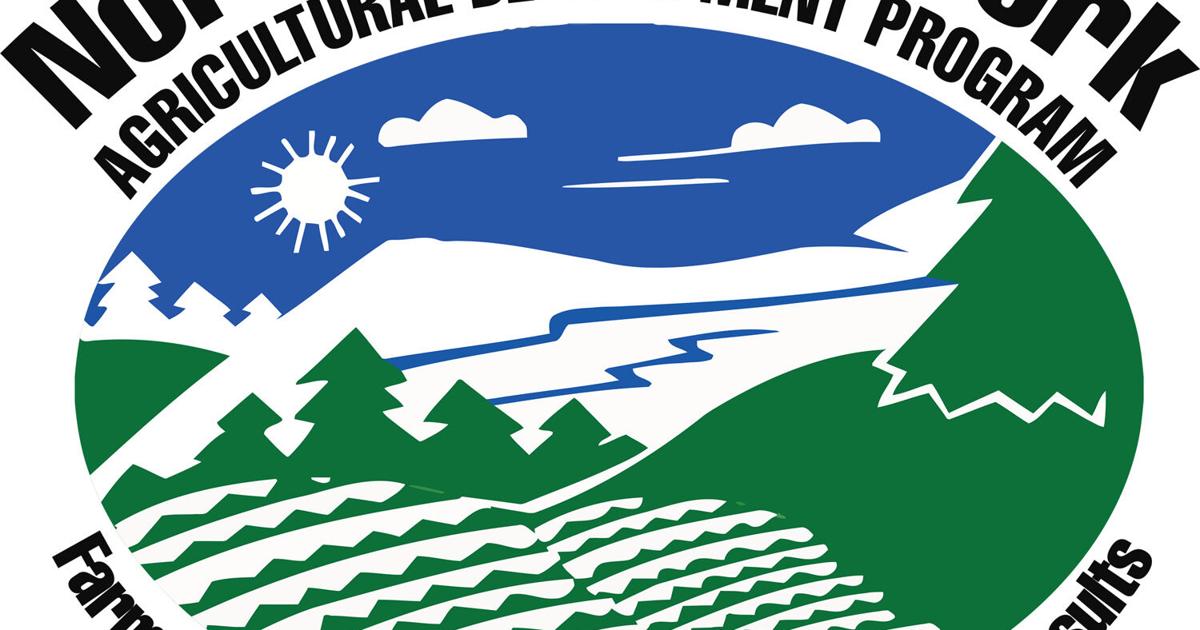NNYADP Farm Research Update Meetings set for March in Chazy and Lowville
NNYADP Farm Research Update Meetings set for March in Chazy and Lowville Plattsburgh Press Republican


Research Update Meetings for Northern New York Agricultural Development Program

Introduction
The farmer-driven Northern New York Agricultural Development Program (NNYADP) has announced research update meetings to be held from 10 a.m. to 12:30 p.m. on Wednesday, March 13, at the Joseph C. Burke Education and Research Center at Miner Institute, 586 Ridge Road, Chazy; and on Wednesday, March 20, at the Cornell Cooperative Extension (CCE) of Lewis County Education Center, 7395 East Road, Lowville, NY.
Registration
The NNYADP Research Update Meetings are free to attend; however, registration is requested for either date by contacting CCE at 315-376-5270.
Sustainable Development Goals (SDGs)
Research funded by the farmer-driven NNYADP is progressively building real-world, field-tested, data-based foundations that help agricultural producers across the six-county northern region of New York State and statewide to manage and adapt to the complex mix of factors that influences farm sustainability and agricultural environmental stewardship.
Presentations
March 13 Meeting in Chazy
- Cornell University Nutrient Management Spear Program Director Quirine M. Ketterings, Ph.D. will present data from a suite of whole farm sustainability projects, including nutrient mass balance and greenhouse gas emissions footprinting; the value of manure, and the use of satellite imagery to determine crop yield stability zones.
- Uihlein Maple Research Forest Director Adam Wild will share information on how tapping into other-than-maple tree species for syrup production can increase maple producers and landowners’ economic potential, plus how a warming climate creates new challenges for sugarmakers.
- Willsboro Research Farm Manager Michael H. Davis, Ph.D., will report on field trial testing and evaluation of promising varieties of elderberry, juneberry, honeyberry, and aronia berry, as well as the first year of trial plantings of hazelnut.
- Miner Institute Research Scientist Laura Klaiber will share data from 10 years of edge-of-field drainage on the quality of surface runoff and tile drainage, the environmental and agronomic impacts of systematic tile drainage in corn and grass fields, and the water quality impacts of widely adopted farming practices when planting cover crops after corn harvest.
March 20 Meeting in Lowville
- Cornell University Nutrient Management Spear Program Director Quirine M. Ketterings, Ph.D. will present data from a suite of whole farm sustainability projects, including nutrient mass balance and greenhouse gas emissions footprinting; the value of manure, and the use of satellite imagery to determine crop yield stability zones.
- Uihlein Maple Research Forest Director Adam Wild will share information on how tapping into other-than-maple tree species for syrup production can increase maple producers and landowners’ economic potential, plus how a warming climate creates new challenges for sugarmakers.
- Cornell PRO-DAIRY Dairy Forage Systems Specialist Joe Lawrence will discuss how producers can gain the most value from corn silage evaluation data from regional on-farm trials and how the evaluation process has changed to determine the best fit for any single farm.
- Cornell Cooperative Extension Tree Fruit Specialist Michael Basedow will present the results of four years of research on apple crop load management, including evaluation of new crop thinning materials and the use of crop load management models to help regional apple growers fine-tune practices for fruit quality and returns.
Funding
Funding for the Northern New York Agricultural Development Program is supported by the New York State Legislature through the New York State Assembly and administered by the New York State Department of Agriculture and Markets. Learn more at www.nnyagdev.org.
SDGs, Targets, and Indicators in the Article
1. Sustainable Development Goal 2: Zero Hunger
- Target 2.4: By 2030, ensure sustainable food production systems and implement resilient agricultural practices that increase productivity and production, that help maintain ecosystems, that strengthen capacity for adaptation to climate change, extreme weather, drought, flooding and other disasters, and that progressively improve land and soil quality.
The article discusses research funded by the Northern New York Agricultural Development Program (NNYADP) that aims to help agricultural producers manage and adapt to factors that influence farm sustainability and agricultural environmental stewardship. This aligns with SDG 2, which focuses on achieving food security and promoting sustainable agriculture.
2. Sustainable Development Goal 13: Climate Action
- Target 13.3: Improve education, awareness-raising and human and institutional capacity on climate change mitigation, adaptation, impact reduction and early warning.
The article mentions presentations at the NNYADP Research Update Meetings that include data on greenhouse gas emissions footprinting and the challenges faced by sugarmakers due to a warming climate. These topics are relevant to SDG 13, which aims to take urgent action to combat climate change and its impacts.
3. Sustainable Development Goal 15: Life on Land
- Target 15.1: By 2020, ensure the conservation, restoration and sustainable use of terrestrial and inland freshwater ecosystems and their services, in particular forests, wetlands, mountains and drylands, in line with obligations under international agreements.
The article mentions research on the quality of surface runoff and tile drainage, as well as the environmental impacts of systematic tile drainage in corn and grass fields. These topics are related to SDG 15, which focuses on protecting, restoring, and promoting sustainable use of terrestrial ecosystems, sustainably managing forests, combating desertification, and halting biodiversity loss.
Table: SDGs, Targets, and Indicators
| SDGs | Targets | Indicators |
|---|---|---|
| SDG 2: Zero Hunger | Target 2.4: By 2030, ensure sustainable food production systems and implement resilient agricultural practices that increase productivity and production, that help maintain ecosystems, that strengthen capacity for adaptation to climate change, extreme weather, drought, flooding and other disasters, and that progressively improve land and soil quality. | The article discusses research funded by the NNYADP that aims to help agricultural producers manage and adapt to factors that influence farm sustainability and agricultural environmental stewardship. |
| SDG 13: Climate Action | Target 13.3: Improve education, awareness-raising and human and institutional capacity on climate change mitigation, adaptation, impact reduction and early warning. | The article mentions presentations on greenhouse gas emissions footprinting and the challenges faced by sugarmakers due to a warming climate. |
| SDG 15: Life on Land | Target 15.1: By 2020, ensure the conservation, restoration and sustainable use of terrestrial and inland freshwater ecosystems and their services, in particular forests, wetlands, mountains and drylands, in line with obligations under international agreements. | The article mentions research on the quality of surface runoff and tile drainage, as well as the environmental impacts of systematic tile drainage in corn and grass fields. |
Behold! This splendid article springs forth from the wellspring of knowledge, shaped by a wondrous proprietary AI technology that delved into a vast ocean of data, illuminating the path towards the Sustainable Development Goals. Remember that all rights are reserved by SDG Investors LLC, empowering us to champion progress together.
Source: pressrepublican.com

Join us, as fellow seekers of change, on a transformative journey at https://sdgtalks.ai/welcome, where you can become a member and actively contribute to shaping a brighter future.







